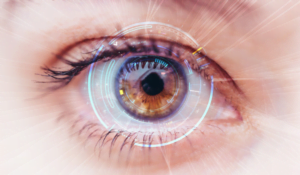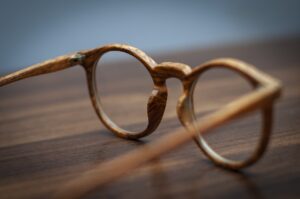
Have you ever questioned why some individuals appear to have a superhuman capacity to perceive clearly even during the darkest of nights while others stumble in the shadows? Researchers have been baffled by the remarkable phenomenon of night vision for millennia. We shall examine the numerous aspects of improved night vision in this article, from larger pupils and more rods in the eyes to enigmatic, unexplained causes.
- Greater Night Vision Through Larger Pupils: The size of certain people’s pupils is a major factor in why some people see better in the dark. When the pupils are large, more light may enter the eyes and go to the retina. The pupils serve as a doorway for light. As a result, the retinal receptors are activated more efficiently, enabling better vision in low light. Although they might benefit from this in the dark, people with wider pupils might struggle in direct sunshine. Under bright light, their pupils need more time and effort to constrict, which can cause discomfort and glare. Even yet, this quality continues to play a big role in better night vision.
- An abundance of rods – Darkness Sensitivity: Rods and cones are the two different types of photoreceptor cells found in the human eye. Rods are in charge of night vision, however they do not give color perception. As a result, people with more rods may have trouble seeing colors in the dark as well as people with more cones. Nevertheless, they have an advantage in nocturnal conditions since they can see objects with extraordinary clarity.
- The Mysteries of Natural Night Vision: In addition to the physiological considerations already stated, some people just seem to have stronger night vision for no apparent reason. This phenomenon’s exact cause is still unknown, despite attempts by researchers to identify it. Although it’s probable that genetic and environmental factors contribute, the precise causes of this innate night vision remain unknown.
Understanding the Value of Night Vision in the Dark
Night vision is a useful skill that can help individuals avoid obstacles and potential dangers in the dark, whether it’s going silently through the woods under the faint glimmer of the moon or navigating through a poorly lit room without disturbing others. Superior night vision can be a game-changer in a variety of occupations, including law enforcement, military operations, and wildlife observation.
In conclusion, a number of variables, such as the size of the pupils, the number of rods in the eyes, and other unexplained causes, affect a person’s ability to see in the dark. While additional rods and wider pupils can improve night vision, some people naturally have better talents. It is a fascinating and crucial component of human eyesight because night vision is a valuable ability that can help humans in a variety of situations.
It’s important to keep in mind that comprehending the complex principles underlying night vision can result in new discoveries and applications that could be useful to all people in a world that doesn’t stop working just because the sun goes down.
Frequently asked questions
While some features of night vision are inherited, other factors, such as letting your eyes get used to darkness, avoiding bright lights before entering the dark, and utilizing night vision equipment, can all help you see better at night.
Indeed, larger pupils let in more light, which improves night vision. However, because they take time for the pupils to contract, they can cause discomfort and glare in direct sunlight.
Numerous nocturnal species have highly developed eyes that are incredibly well adapted to low-light situations, frequently outperforming human night vision.
Yes, as with many other visual abilities, night vision can degrade with age as a result of changes in the structure and operation of the eye.
No, infrared vision uses infrared technology to detect heat signatures and produce visible images in complete darkness. Night vision refers to the capacity to see in low light.





Recent Articles:

Alleviating Digital Eye Strain: Tips for Screen Users

The Truth About Seeing in the Dark

The Myth of Green Improving Eyesight

The Dangers of Looking Directly at the Sun

The Risks of Using Smartphones in the Dark on Eye Health

An Examination of Visual Phenomena for “Ghost Images”




